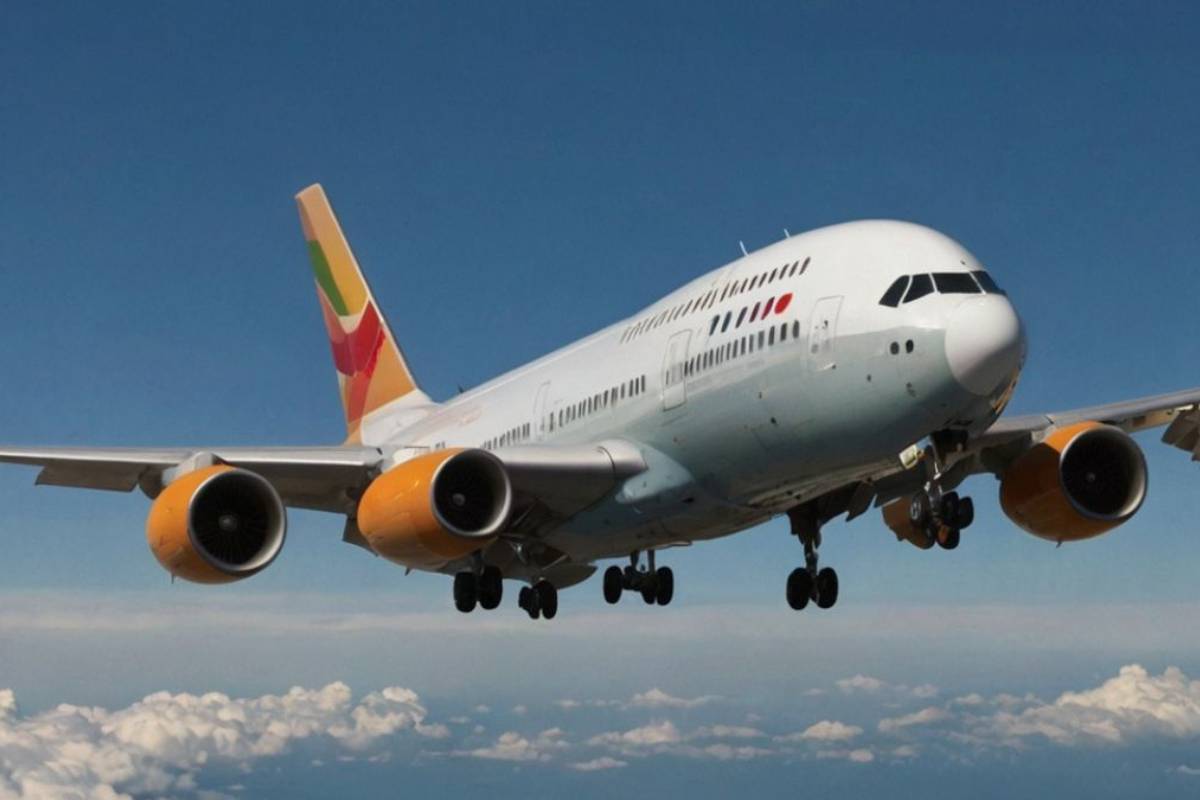India’s Aviation Ascent
Funny thing is, a decade ago? No one in the global aviation industry was betting on India to climb this high, this fast. But here we are in 2025: India has officially become the world’s fifth-largest aviation market, a feat powered by remarkable passenger growth, surging demand for domestic and international flights, and a government eager to keep runways (and ambitions) expanding.
The numbers leave little to debate. In 2024, India handled 241 million air passengers, just let that sink in, ahead of economies like Japan, and with Mumbai-Delhi ranked as one of the world’s busiest air corridors. That’s not just moving people. That’s rewriting the global aviation playbook.
Let’s peel back the layers, examining what fueled this rise, who’s flying, where the industry might stumble (or soar), and why India is suddenly central to the future of air travel.
The Big Picture: Charting the Skies
India’s Global Rank
India now sits at number five globally in total passenger traffic, only behind the usual suspects: the United States, China, the United Kingdom, and Germany. And the gap is closing quickly, if we’re honest about current growth rates.
- Total Passengers (2024): 241 million
- Growth Rate (Year-over-Year): 11.1% increase over 2023 figures
- Top Domestic Route: Mumbai-Delhi, the seventh busiest worldwide with roughly 5.9 million passengers in 2024
What’s driving these soaring numbers?
Domestic Aviation: Rising From Within
Here’s the kicker: so much of this growth is homegrown. Domestic routes have become the artery of Indian aviation, fueling both volume and innovation.
Passenger Statistics
- Domestic Passengers (2024): 211 million
- Yearly Growth: 11.1% rise over 2023
- April 2025 Domestic Growth: Up 10.2% year-over-year, reaching 14.55 million passengers in that month alone
- Market Recovery: Domestic traffic has now surged 16.8% above pre-COVID levels (FY20)
Key Market Shifts
- Low-cost carriers (LCCs) now command nearly 80% of domestic capacity.
- Strong regional connectivity, those tier-2 and tier-3 cities, has transformed the industry. Remember the days when flying out of Ranchi or Surat felt like science fiction? Not anymore.
Government Initiatives Fueling Growth
- UDAN Scheme: Aimed at making air travel affordable and connecting underserved regions.
- Gati Shakti and Infrastructure Pushes: Targets 50 new airports in the next decade. That’s not a typo, 50 brand-new airports.
Short story: Flying is no longer for the elite or big-city dwellers alone. It’s getting deeply woven into small-town India’s routine.
International Expansion: India Outward Bound
Indian skies aren’t confined by national borders. The international segment is revving up, too.
- International Traffic (2025): Jumped from 55 million to 72 million with a 30% rise in outbound travel in the last twelve months.
- Indian carriers captured 40%-45% of international capacity in 2025, and that’s expected to rise as new aircraft arrive and more global routes open up.
What’s new here?
- More direct connections: Europe, the Middle East, Southeast Asia.
- The Air India Group’s consolidation with Vistara and Air India Express increases operational muscle.
- E-visa rollout and tourism campaigns are boosting inbound flyers.
The Money Behind the Momentum: Market Size & Growth
Market Size and Outlook
- Current Value (2024): $14.47 billion
- Projected Value (2033): $40.81 billion, nearly triple
- CAGR 2025–2033: 12.21%
- Contribution to GDP: 1.5%, that’s $53.6 billion annually
Here’s What That Means…
This isn’t just planes in the sky. It’s airports, leasing companies, maintenance crews, catering, training, and a swelling ecosystem of suppliers and tech startups. The aviation industry now supports more than 7.7 million jobs in India, both directly and indirectly.
Who’s Flying the Planes: Players & Market Share
Let’s lay out the main actors.
Top Airlines (2025):
- IndiGo: 63.7% domestic market share, it’s the all-India king
- Air India Group: 27.3%, supercharged after recent mergers
- SpiceJet and Akasa Air: Small, but nimble. Together, just under 8% of the domestic pie
And the hierarchy is changing as more players eye long-haul routes, invest in larger jets, or go public to raise fresh capital.
What’s Fueling the Boom: The Growth Engines
Rising Disposable Incomes
More Indians can now afford to fly, plain and simple. India’s swelling middle class isn’t just watching planes fly overhead; they’re sitting inside them, luggage in tow, destination in mind. Air travel is sliding into the “everyday life” category, not a rare luxury.
Urbanization & Regional Demand
You know how young cities sprout airports overnight? That’s Indian urbanization at work, with new manufacturing and IT hubs pushing commercial aviation deep into the hinterland. The goal: 95% of India’s population within a 100km drive of an airport by 2040.
Policy Reform & Infrastructure
- Transparent land allocation, making it easier to set up new airports or MRO (Maintenance, Repair & Overhaul) hubs
- Privatization and “Make in India” aerospace manufacturing, including military aircraft assembly lines in Hyderabad and Gujarat
Challenges: Clouds on the Horizon?
So, everything’s perfect? Not exactly.
Operational Headwinds
- Rising ATF (Aviation Turbine Fuel) prices are squeezing margins.
- Geopolitical Tensions: Airspace closures (like Iran, Pakistan) complicate routing and raise costs.
- Supply Chain Disruptions: Engine shortages, delayed new aircraft deliveries.
- Low Per Capita Air Trips: Despite growth, only 0.1 trips per Indian compared to 0.5 in China and 2.1 in the U.S., which, if I’m honest, spells MASSIVE untapped opportunity but also hints at barriers ahead (pricing, infrastructure, digital access).
Profitability Lag
Surprisingly, despite this boom, the sector may post net losses of ₹2,000 to ₹3,000 crore in FY2026, as price competition remains intense (blame those LCC fares), and operating costs inch up.
Stats at a Glance
Here’s a brief, scroll-worthy cheat sheet:
| Metric | 2024 / 2025 Value | Source & Notes |
| Passengers handled | 241 million | 5th globally |
| Domestic air passengers | 211 million | |
| Domestic traffic YoY growth | 11.1% (2024), 10.2% (April 2025) | |
| International air passengers | 72 million | 30% YoY increase |
| Total market size | $14.47 (2024), $40.81 (2033) | CAGR 12.21% |
| GDP/Job contribution | $53.6B / 7.7 million jobs | |
| Airports (current/target) | 117 / >200 by 2030 | |
| LCC market share | ~80% domestic |
Looking Ahead: The Next Decade
Here’s the real clincher: India may soon eclipse Germany and the UK, gunning for third place globally by passenger volume by the early 2030s. Forecasts say India will triple passenger numbers by 2044, outrunning every other major market in growth terms.
What Will Power This?
- More airports, more routes: Spreading aviation beyond 10-15 big cities.
- Fleet expansion: Indian airlines have some of the world’s largest aircraft orders pending, all set for delivery in the late 2020s.
- Digital & Contactless: Seamless travel with biometric boarding, digital ID, e-baggage, India’s airports are some of the fastest to adopt this tech in Asia.
- Sustainability: Yes, it’s creeping in, biofuels, solar-powered terminals, green taxiways.
Quotes from the Field
“Our domestic traffic has surged 30%. International traffic has risen from 55 million to 72 million. This is a clear invitation to the world’s airlines: fly to India, fly in India, and fly with India.”
, Kinjarapu Rammohan Naidu, Civil Aviation Minister, June 2025
“India’s low trips per capita indicate enormous untapped potential. By 2043, ACI projects India will quadruple that figure to 0.4 trips per person.”
, Airports Council International, 2025
Unexpected Twists & Uneven Skies
Now, not everything is linear. In July 2025, for instance, domestic capacity contracted 2.2% versus last year. Why? Slight economic deceleration and aircraft delivery bottlenecks. But bigger picture: even short-term turbulence can’t stall the upward arc for long.
And get this, while the top ten airports still account for the lion’s share of traffic, new airports in Navi Mumbai, Noida, and other cities will soon redraw that map entirely. Air connectivity, in other words, is fanning out fast.
Flying into the Future
If I’m honest, aviation in India feels a bit like watching a startup outgrow its business plan. The ingredients, population size, digital adoption, government backing, and private sector firepower are there. The only question now: How fast? And how high?
India in 2025 is a noisy, bustling, high-altitude crossroads for global aviation. The fifth largest in the world, yes, but more importantly: a market defying gravity, expectations, and, given the right tailwinds, maybe even its limits. Stay tuned. The sky’s getting crowded. And for India? That’s just the beginning.








